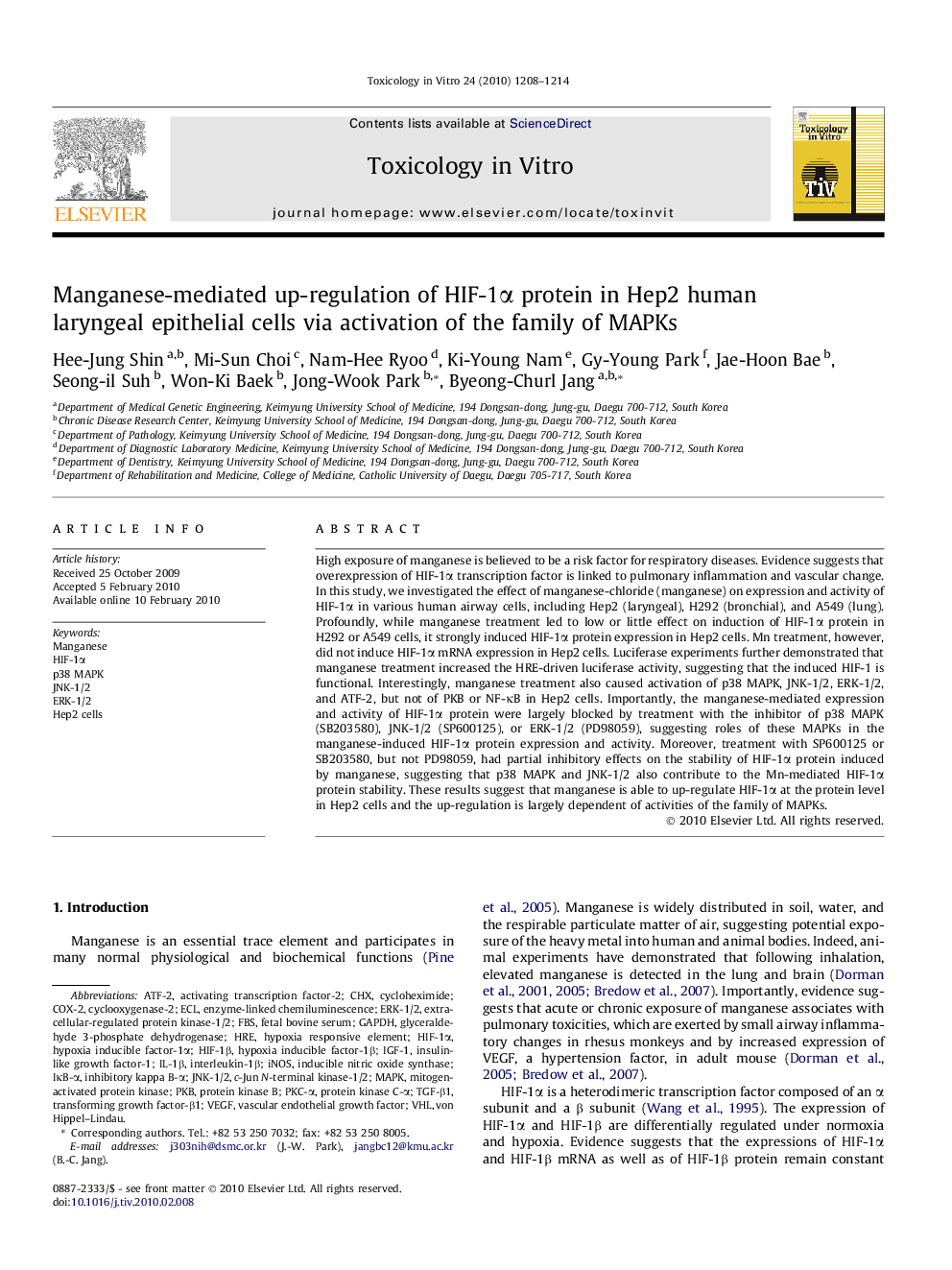| Article ID | Journal | Published Year | Pages | File Type |
|---|---|---|---|---|
| 2602757 | Toxicology in Vitro | 2010 | 7 Pages |
Abstract
High exposure of manganese is believed to be a risk factor for respiratory diseases. Evidence suggests that overexpression of HIF-1α transcription factor is linked to pulmonary inflammation and vascular change. In this study, we investigated the effect of manganese-chloride (manganese) on expression and activity of HIF-1α in various human airway cells, including Hep2 (laryngeal), H292 (bronchial), and A549 (lung). Profoundly, while manganese treatment led to low or little effect on induction of HIF-1α protein in H292 or A549 cells, it strongly induced HIF-1α protein expression in Hep2 cells. Mn treatment, however, did not induce HIF-1α mRNA expression in Hep2 cells. Luciferase experiments further demonstrated that manganese treatment increased the HRE-driven luciferase activity, suggesting that the induced HIF-1 is functional. Interestingly, manganese treatment also caused activation of p38 MAPK, JNK-1/2, ERK-1/2, and ATF-2, but not of PKB or NF-κB in Hep2 cells. Importantly, the manganese-mediated expression and activity of HIF-1α protein were largely blocked by treatment with the inhibitor of p38 MAPK (SB203580), JNK-1/2 (SP600125), or ERK-1/2 (PD98059), suggesting roles of these MAPKs in the manganese-induced HIF-1α protein expression and activity. Moreover, treatment with SP600125 or SB203580, but not PD98059, had partial inhibitory effects on the stability of HIF-1α protein induced by manganese, suggesting that p38 MAPK and JNK-1/2 also contribute to the Mn-mediated HIF-1α protein stability. These results suggest that manganese is able to up-regulate HIF-1α at the protein level in Hep2 cells and the up-regulation is largely dependent of activities of the family of MAPKs.
Keywords
iNOSPKBHRECHXHIF-1αVHLIGF-1ECLIL-1βHIF-1βIκB-αinhibitory kappa B-αCOX-2GAPDHATF-2PKC-αERK-1/2Hep2 cellsFBSTGF-β1protein kinase C-αMAPKp38 MAPKVon Hippel–Lindauinsulin-like growth factor-1Interleukin-1βTransforming growth factor-β1fetal bovine seruminducible nitric oxide synthasecycloheximideCyclooxygenase-2hypoxia inducible factor-1αHypoxia responsive elementVascular endothelial growth factorVascular Endothelial Growth Factor (VEGF)activating transcription factor-2Manganeseprotein kinase Bmitogen-activated protein kinaseglyceraldehyde 3-phosphate dehydrogenase
Related Topics
Life Sciences
Environmental Science
Health, Toxicology and Mutagenesis
Authors
Hee-Jung Shin, Mi-Sun Choi, Nam-Hee Ryoo, Ki-Young Nam, Gy-Young Park, Jae-Hoon Bae, Seong-il Suh, Won-Ki Baek, Jong-Wook Park, Byeong-Churl Jang,
